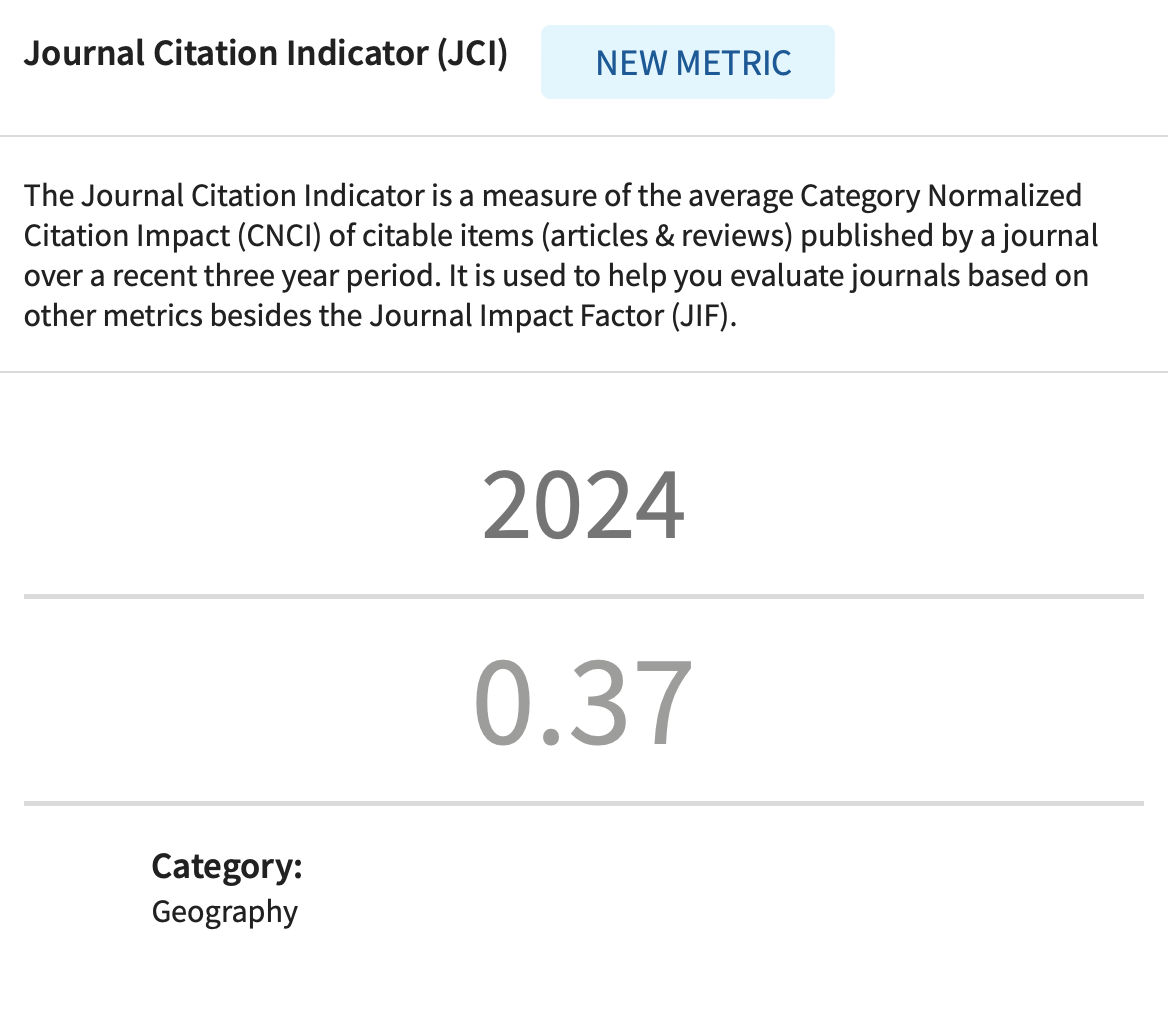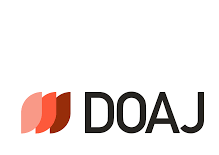MATERNAL AND INFANT MORTALITY IN WEST JAVA, INDONESIA: SPATIAL CLUSTERS AND DETERMINANTS
DOI:
https://doi.org/10.2298/IJGI2501137FKeywords:
GIS, maternal mortality, infant mortality, West JavaAbstract
Utilizing geographic information systems (GIS) for spatial analysis is crucial for examining, assessing, and visualizing the health status of different regions. There has been a high maternal and infant mortality rate in West Java, Indonesia, leading to a need for spatial information to support the government in planning healthcare. This study aims to examine and compare the geographic clusters between maternal mortality ratio (MMR) and infant mortality rate (IMR) utilizing tools in a GIS environment; it also aims to assess how those clusters relate to socioeconomic conditions. Data on mortalities and demography in 2020 were collected from the Department of Health Regional and Statistics Bureau. The Getis-Ord Gi* hotspot was applied for the IMR and MMR spatial clustering (low and high numbers—clusters). Further, the ordinary least square (OLS) was implemented to generate the correlation between MMR-IMR clusters and socioeconomic factors. Our results show that significantly low clusters of both MMR and IMR (with 95–99% confidence levels) were located close to urban and highly developed areas. The spatial pattern of hot and cold MMR clusters was similar to the IMR clusters (> 0.68). OLS models showed a high relationship between selected variables and IMR (R2 = 0.80), but low relationship with MMR (R2 = 0.20). A significant correlation was found between IMR and population density, income, and percentage of the population without education, while MMR was related to the number of health facilities. These findings illustrated the performed analysis capability to identify priority areas for maternal and childcare services.
Article metrics
References
Adeyeye, S. A. O., Ashaolu, T. J., Bolaji, O. T., Abegunde, T. A., & Omoyajowo, A. O. (2021). Africa and the Nexus of poverty, malnutrition and diseases. Critical Reviews in Food Science and Nutrition, 63(5), 641–656. https://doi.org/10.1080/10408398.2021.1952160
National Population and Family Planning Board (BKKBN), Statistical Indonesia (BPS), Ministry of Health (Kemenkes), & ICF. (2018). Indonesia demographic and health survey 2017. BKKBN, BPS, Kemenkes, and ICF. https://dhsprogram.com/pubs/pdf/FR342/FR342.pdf
Bramdito, V. C., Hadibasyir, H. Z., Wardhani, S. A. K., Febriany, R., Hani, I. N., & Widayani, P. (2021). Pemodelan spasial epidemiologi fascioliasis berdasarkan analisis faktor risiko sebagai strategi pengelolaan ternak di daerah Istimewa Yogyakarta [Spatial modeling of fascioliasis epidemiology based on risk factor analysis as a livestock management strategy in the Special Region of Yogyakarta]. GEOGRAPHIA: Jurnal Pendidikan Dan Penelitian Geografi, 2(1), Article 1. https://doi.org/10.53682/gjppg.v2i1.1119
Brewer, C. A., & Pickle, L. (2002). Evaluation of Methods for Classifying Epidemiological Data on Choropleth Maps in Series. Annals of the Association of American Geographers, 92(4), 662–681. https://doi.org/10.1111/1467-8306.00310
Budiarto, S. (2017). Tradisi Luru Duit [Luru Duit Tradition]. Thesis Universitas Gadjah Mada. Universitas Gadjah Mada. https://etd.repository.ugm.ac.id/penelitian/detail/110410
Cameron, L., Suarez, D. C., Cornwell, K. (2019). Understanding the determinants of maternal mortality: An observational study using the Indonesian Population Census. PLoS ONE, 14(6), Article e0217386. https://doi.org/10.1371/journal.pone.0217386
ESRI. (2011). ArcGIS Desktop: Release 10. Redlands, CA. Environmental Systems Research Institute.
ESRI. (2024). Regression analysis basics—ArcGIS Pro | Documentation. https://pro.arcgis.com/en/pro-app/latest/tool-reference/spatial-statistics/regression-analysis-basics.htm
Getis, A., & Ord, J. K. (1996). Local spatial statistics: An overview. In: P. Longley & M. Batty (Eds.), Spatial Analysis: Modeling in A GIS Environment (pp. 261–277). John Wiley & Sons.
Grijns, M., & Horii, H. (2018). Child marriage in a village in West Java (Indonesia): Compromises between legal obligations and religious concerns. Asian Journal of Law and Society, 5(2), 453–466.. https://doi.org/10.1017/als.2018.9
Hartono, R. (2022). Ragam sketsa muka bumi Jawa Barat [West Java land surface]. Penerbit Andi.
Isazade, V., Qasimi, A. B., Dong, P., Kaplan, G., & Isazade, E. (2023). Integration of Moran’s I, geographically weighted regression (GWR), and ordinary least square (OLS) models in spatiotemporal modeling of COVID-19 outbreak in Qom and Mazandaran Provinces, Iran. Modeling Earth Systems and Environment, 9(4), 3923–3937. https://doi.org/10.1007/s40808-023-01729-y
Iyanda, A. E., Oppong, J. R., Hamilton, P., & Tiwari, C. (2018). Using GIS to detect cluster and spatial disparity in maternal health indicators: A need for social health interventions. Social Work in Public Health, 33(7–8), 449–466. https://doi.org/10.1080/19371918.2018.1543628
Jenks, G. F. (1967). The Data Model Concept in Statistical Mapping. International Yearbook of Cartography, 7, 186–190. https://www.semanticscholar.org/paper/The-Data-Model-Concept-in-Statistical-Mapping-Jenks/9551c4531a87b4ab01931bf5b68dac945ef3f9ab
Lun, X., Wang, Y., Zhao, C., Wu, H., Zhu, C., Ma, D., Xu, M., Wang, J., Liu, Q., Xu, L., & Meng, F. (2022). Epidemiological characteristics and temporal-spatial analysis of overseas imported dengue fever cases in outbreak provinces of China, 2005–2019. Infectious Diseases of Poverty, 11, Article 12. https://doi.org/10.1186/s40249-022-00937-5
Mahara, G., Yang, K., Chen, S., Wang, W., & Guo, X. (2018). Socio-Economic Predictors and Distribution of Tuberculosis Incidence in Beijing, China: A Study Using a Combination of Spatial Statistics and GIS Technology. Medical Sciences, 6(2), Article 26. https://doi.org/10.3390/medsci6020026
Marshan, J. N., Rakhmadi, M. F., & Rizky, M. (2013). Prevalence of child marriage and its determinants among young women in Indonesia. Child Poverty and Social Protection Conference, Jakarta, Indonesia, September 2013. https://www.neliti.com/publications/605/prevalence-of-child-marriage-and-its-determinants-among-young-women-in-indonesia#cite
Mutalazimah, M., Handaga, B., & Sigit, A. A. (2009). Aplikasi sistem informasi geografis pada pemantauan status gizi balita di Dinas Kesehatan Kabupaten Sukoharjo [Application of geographic information system in monitoring the nutritional status of toddlers at the Sukoharjo District Health Office]. Forum Geografi, 23(2), Article 2. https://doi.org/10.23917/forgeo.v23i2.5008
Olonade, O., Olawande, T. I., Alabi, O. J., & Imhonopi, D. (2019). Maternal mortality and maternal health care in Nigeria: Implications for socio-economic development. Open Access Macedonian Journal of Medical Sciences, 7(5), 849–855. https://doi.org/10.3889/oamjms.2019.041
Ortigoza, A. F., Granados, J. A. T., Miranda, J. J., Alazraqui, M., Higuera, D., Villamonte, G., Friche, A. A. de L., Gutierrez, T. B., Roux, A. V. D. (2021). Characterising variability and predictors of infant mortality in urban settings: findings from 286 Latin American cities. Journal of Epidemiology and Community Health, 75, 264–270. https://doi.org/10.1136/jech-2020-215137
Ouko, J. J. O., Gachari, M. K., Sichangi, A. W., & Alegana, V. (2019). Geographic information system-based evaluation of spatial accessibility to maternal health facilities in Siaya County, Kenya. Geographical Research, 57(3), 286–298. https://doi.org/10.1111/1745-5871.12339
Owusu, P. A., Sarkodie, S. A., & Pedersen, P. A. (2021). Relationship between mortality and health care expenditure: Sustainable assessment of health care system. PLoS ONE, 16(2), Article e0247413. https://doi.org/10.1371/journal.pone.0247413
Razavi-Termeh, S. V., Sadeghi-Niaraki, A., & Choi, S.-M. (2021). Asthma-prone areas modeling using a machine learning model. Scientific Reports, 11(1), Article 1912. https://doi.org/10.1038/s41598-021-81147-1
Rizqi, A. A., Djannah, S., & Suryani, D. (2023). Determinants of maternal mortality prevention by midwives in Sleman Regency in 2023. J-Kesmas: Jurnal Fakultas Kesehatan Masyarakat (The Indonesian Journal of Public Health), 10(2), Article 2. https://doi.org/10.35308/j-kesmas.v10i2.7767
Rumpiati, R. (2022). Faktor budaya (adat Jawa) dengan pengetahuan, sikap, dan perilaku ibu dalam perawatan pada masa nifas. Jurnal Maternitas Aisyah (JAMAN AISYAH), 3(1), Article 1. https://doi.org/10.30604/jaman.v3i1.410
Rumpiati, R. (2022). Faktor budaya (adat Jawa) dengan pengetahuan, sikap, dan perilaku ibu dalam perawatan pada masa nifas [Cultural factors (Javanese customs) with maternal knowledge, attitudes, and behavior in postpartum care]. Jurnal Maternitas Aisyah (JAMAN AISYAH), 3(1), Article 1. https://doi.org/10.30604/jaman.v3i1.410
Saripah, I., Roring, L. A., Hamzah, R. M., Irawan, T. M. I. A., Hartanto, D., Nadhirah, N. A., Baranovich, D. L., & Sethul, H. (2024). Mental health challenges in children: A cross-sectional study using the Strengths and Difficulties Questionnaire. Indonesian Journal on Learning and Advanced Education (IJOLAE), 7(1), 179–197. https://doi.org/10.23917/ijolae.v7i1.24139
Silalahi, F. E. S., Hidayat, F., Dewi, R. S., Purwono, N., & Oktaviani, N. (2020). GIS-based approaches on the accessibility of referral hospital using network analysis and the spatial distribution model of the spreading case of COVID-19 in Jakarta, Indonesia. BMC Health Services Research, 20(1), Article 1053. https://doi.org/10.1186/s12913-020-05896-x
Statistics Indonesia. (2023). The result of long form population census 2020. https://www.bps.go.id/en/publication/2023/01/27/ffb5939b4393e5b1146a9b91/hasil-long-form-sensus-penduduk-2020.html
Statistics of West Java. (2024). Badan Pusat Statistik Provinsi Jawa Barat. Badan Pusat Statistik Provinsi Jawa Barat. https://jabar.bps.go.id
Statistics of West Java. (2024). Badan Pusat Statistik Provinsi Jawa Barat [West Java statistics]. Badan Pusat Statistik Provinsi Jawa Barat. https://jabar.bps.go.id
Susilowati, A. P. E., Rachmawati, R., & Rijanta, R. (2024). Analysis of smart village development in supporting smart city in Indonesia: A systematic review. Forum Geografi, 38(3), Article 3. https://doi.org/10.23917/forgeo.v38i3.4790
Tarsikah, T., Diba, D. A. A., & Didiharto, H. (2020). Komplikasi maternal dan luaran bayi baru lahir pada kehamilan remaja di Rumah Sakit Umum Daerah Kanjuruhan, Kepanjen, Malang [Maternal complications and neonatal outcomes in adolescent pregnancy at Kanjuruhan Regional General Hospital, Kepanjen, Malang]. Jurnal Kesehatan, 13(1), 54–68. https://doi.org/10.23917/jk.v13i1.11102
UNFPA. (2015). UNFPA Indonesia. UNFPA Indonesia. https://indonesia.unfpa.org/home
UNICEF. (2019). Resources | UNICEF Indonesia: Provincial Snapshot West Java. https://www.unicef.org/indonesia/sites/unicef.org.indonesia/files/2019-05/West_Java_ProvincialBrief.pdf
UNICEF. (2023a). Maternal mortality rates and statistics. UNICEF DATA. https://data.unicef.org/topic/maternal-health/maternal-mortality/
UNICEF. (2023b). Neonatal mortality. UNICEF DATA. https://data.unicef.org/topic/child-survival/neonatal-mortality/
UNICEF. (2024). SDG Goal 3: Good Health and Well-being. UNICEF DATA. https://data.unicef.org/sdgs/goal-3-good-health-wellbeing/
United Nations General Assembly. (2015). Transforming our world: The 2030 Agenda for Sustainable Development (A/RES/70/1). https://undocs.org/A/RES/70/1
University of California, Berkeley. (2022). Global Administrative Areas. Global Administrative Areas. https://gadm.org/
WHO. (n.d.-a). Indicator metadata registry details. Retrieved September 16, 2024, from https://www.who.int/data/gho/indicator-metadata-registry/imr-details/26
WHO. (n.d.-b). Infant mortality rate. Retrieved September 16, 2024, from https://www.who.int/data/gho/indicator-metadata-registry/imr-details/1
WHO. (2023). Trends in maternal mortality 2000 to 2020: Estimates by WHO, UNICEF, UNFPA, World Bank Group and UNDESA/Population Division. https://www.who.int/publications/i/item/9789240068759
WHO. (2024). The Global Health Observatory. https://www.who.int/data/gho/data/themes/world-health-statistics
Yasobant, S., Vora, K. S., Hughes, C., Upadhyay, A., & Mavalankar, D. V. (2015). Geovisualization: A newer GIS technology for implementation research in health. Journal of Geographic Information System, 7(1), 20–28. https://doi.org/10.4236/jgis.2015.71002
Yue, Y., Sun, J., Liu, X., Ren, D., Liu, Q., Xiao, X., & Lu, L. (2018). Spatial analysis of dengue fever and exploration of its environmental and socio-economic risk factors using ordinary least squares: A case study in five districts of Guangzhou City, China, 2014. International Journal of Infectious Diseases, 75, 39–48. https://doi.org/10.1016/j.ijid.2018.07.023
Zhang, Y., Zheng, Q., Ye, S., Zhang, K., & Lin, W. (2023). Spatial distribution characteristics and analysis of influencing factors on different manufacturing types in Shandong Province. PLoS ONE, 18(9), Article e0291691. https://doi.org/10.1371/journal.pone.0291691
Downloads
Published
How to Cite
Issue
Section
License
Copyright (c) 2025 Journal of the Geographical Institute “Jovan Cvijić” SASA

This work is licensed under a Creative Commons Attribution 4.0 International License.











